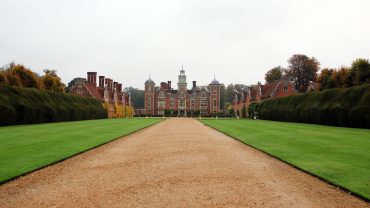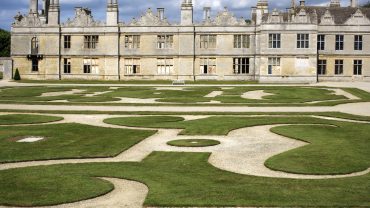High-Tech architecture in the UK served as a link between the more restrained, traditional Modernist architecture and the bold, decorative style of Postmodernism, which came about as a reaction against Modernism’s perceived uniformity and dullness.
The new breed of technological buildings that emerged in the 1970s and 1980s put high emphasis on transparency, adaptability, and the honest expression of a building’s structure and services, often showcasing exposed steel frameworks, glass facades, and visible mechanical systems such as pipes and ducts.
This shift into the uncharted waters of building tech embraced a futuristic, factory-like aesthetic that highlighted engineering and construction as central design elements, but how did High-Tech architecture evolve? Who were they key players in its evolution, and what are the most famous buildings associated with what is often described as the last major architectural movement of the twentieth century.
Let’s log-in to the legacy of the boldest buildings on the UK skyline.
The Origins of High-Tech Architecture

The Seagram Building in New York, designed by Mies van der Rohe (Credit: Pavel Tochinsky via Getty Images)
The origins of high technology architecture can be traced to the modernist movement of the early twentieth century, particularly the design principles of architects such as Le Corbusier, Walter Gropius, and Mies van der Rohe, who advocated for transparency, functionalism, and the integration of new materials. The work of Buckminster Fuller and Frei Otto, with their focus on lightweight, tensile structures, also played a significant role in shaping the new era of technological buildings.
Archigram and High-Tech Architecture in the UK

Avant garde ideas from the 1960s greatly influenced modern design (Credit: CHUNYIP WONG via Getty Images)
Archigram was an avant-garde British architectural collective formed in the 1960s, whose radical, mostly unbuilt projects and provocative publications played a foundational role in shaping the High-Tech architecture movement.
The group’s key members – Peter Cook, Warren Chalk, Dennis Crompton, Michael Webb, David Greene, and Ron Herron – championed a neofuturistic approach that prioritised ideas, mobility, and adaptability over traditional architectural forms. Their design principles centred on the use of technology to create flexible, mobile urban environments, and among their most famous conceptual projects are Peter Cook’s Plug-in City, a vast megastructure allowing modular living units to be slotted in and out; Ron Herron’s Walking City, featuring intelligent, mobile living pods; and Instant City, a temporary, technology-driven cultural event that could travel between towns.
While Archigram’s designs were rarely built, their visionary thinking and embrace of technological optimism directly influenced the development of High-Tech architecture. They inspired the technological buildings of later architects to integrate advanced engineering and flexible systems into some of the world’s most iconic buildings.
These projects exemplified the high-tech ethos by making technology and engineering integral to both the function and visual identity of the buildings, directly reflecting Archigram’s influence on a new generation of architects.
The Beating Heart of High Technology Architecture

London's Canary Wharf is a hotbed of High-Tech architecture (Credit: Gary Yeowell via Getty Images)
At its heart, High-Tech architecture marked a bold move to make technology and engineering a visible part of building design. Instead of hiding elements such as service towers, pipes, and structural supports, architects made these features stand out and become part of the building’s visual identity.
This style wasn’t just about how buildings looked – it was also about making them flexible and able to adapt to new uses over time. The main principles of this new age of building tech included transparency, flexibility, and a focus on innovation, and it was so successful because it captured the excitement and zeitgeist of a new technological era, offering practical solutions for modern life while creating iconic, instantly recognisable buildings. This adaptability and forward-thinking approach helped High-Tech architecture leave a lasting mark on cities around the world.
The Architects and Their Buildings

Two examples of iconic architecture, Portcullis House and the Elizabeth Tower (Credit: PurpleImages via Getty Images)
The architects who defined High-Tech architecture in the UK include Sir Richard Rogers, Norman Foster, Michael Hopkins, and Nicholas Grimshaw, each responsible for some of the movement’s most iconic buildings. Richard Rogers, with Renzo Piano, set the stage internationally with the Centre Pompidou in Paris, a radical design that exposed its structure and services, and later brought this approach to the Lloyd’s Building in London, famous for its external lifts and colour-coded pipes.
Norman Foster’s work on technological buildings includes the innovative Willis Faber & Dumas building in Ipswich, the HSBC UK headquarters in Canary Wharf and the Renault Distribution Centre in Swindon, all showcasing expressive steel frames and adaptable interiors.
Michael Hopkins contributed with the Schlumberger Cambridge Research Centre, notable for its pioneering use of prefabricated modules and a Teflon-coated roof, and Portcullis House on the Victoria Embankment, which integrates modern technology within a historic context.
Nicholas Grimshaw’s work on the International Terminal at Waterloo Station further exemplifies the principles of high technology architecture.
The UK’s High-Tech Architecture List

The stunning glass roof of the Waterloo International Terminal (Credit: Eric Bascol via Getty Images)
Notable examples of UK buildings in the High-Tech architecture style include –
- Lloyd’s Building, London – Richard Rogers Partnership
- Willis Faber & Dumas Headquarters, Ipswich – Foster Associates
- Sainsbury Centre for Visual Arts, Norwich – Foster Associates
- Hopkins House, Hampstead, London – Michael and Patty Hopkins
- Renault Centre (Spectrum Building), Swindon – Foster Associates
- Waterloo International Terminal, London – Grimshaw Architects
- Inmos Microprocessor Factory, Newport – Richard Rogers Partnership
- Patera Building Prototype, Stoke-on-Trent – Michael Hopkins Architects
- Schlumberger Gould Research Centre, Cambridge – Michael Hopkins and Partners
- 88 Wood Street, London – Richard Rogers Partnership
High-Tech Architecture: From Drawing Board to Motherboard

The Lloyds Building in London (Credit: JohnnyGreig via Getty Images)
While high technology architecture was among the last major, cohesive architectural styles of the twentieth century – soon succeeded by deconstructivism and postmodern eclecticism – its legacy endures in the UK today. Its emphasis on structural expression and industrial materials continues to influence contemporary design, serving as a testament to the relevance of technological innovation in the built environment.











